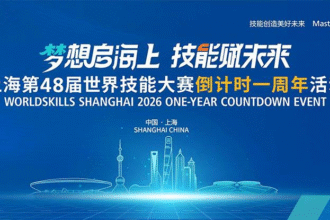Introduction to WQR2548
WQR2548 might sound like a complex code, but it represents something much more significant in today’s technological landscape. As industries evolve and adapt to new challenges, understanding WQR2548 becomes essential for professionals and enthusiasts alike. This intriguing entity holds the potential to transform various sectors by streamlining processes and enhancing efficiency.
But what exactly is WQR2548? Why is it garnering attention across multiple fields? Join us on this journey as we unpack its history, explore its workings, and delve into its diverse applications. Whether you’re a tech-savvy individual or someone curious about emerging trends, there’s plenty to discover about WQR2548!
The History and Evolution of WQR2548
WQR2548 has an intriguing backstory that reflects the rapid advancements in technology. Initially conceived in the early 2000s, it emerged from a need for more efficient standards in data processing.
As industries began to recognize its potential, research and development efforts surged. Early adaptations focused on enhancing speed and accuracy. These innovations laid the groundwork for what WQR2548 would become.
Over the years, numerous updates followed. Each iteration brought significant improvements in functionality and user interface design. The collaborative efforts of engineers and tech enthusiasts played a critical role throughout this evolution.
Today, WQR2548 stands as a testament to innovation driven by necessity. Its journey mirrors broader trends within various sectors seeking streamlined solutions amid growing demands.
How WQR2548 Works: Exploring the Technicalities
WQR2548 operates through a sophisticated interplay of algorithms and data processing. At its core, it harnesses advanced computational techniques that enhance efficiency across various platforms.
The system utilizes a modular architecture, allowing for flexibility in integration with existing frameworks. This adaptability is crucial for industries seeking seamless transitions to new technologies.
Data inputs are processed in real-time, enabling quick decision-making. By leveraging machine learning models, WQR2548 can refine its operations based on historical performance and current trends.
Moreover, security features are embedded within the framework to safeguard sensitive information. Encryption protocols ensure that data remains protected during transfers and storage.
WQR2548’s design prioritizes user experience by offering intuitive interfaces while maintaining robust functionality. The combination of these technical elements positions it as a leader in innovative solutions across multiple sectors.
Applications of WQR2548 in Different Industries
WQR2548 is making waves across various sectors, each finding innovative ways to leverage its capabilities. The manufacturing industry benefits greatly from WQR2548’s precision in quality control. Automated systems utilize this technology to enhance productivity and ensure consistent output.
In healthcare, WQR2548 plays a pivotal role in diagnostics. Medical devices equipped with this technology improve accuracy while processing data swiftly. This leads to timely decision-making for patient care.
The automotive sector also sees significant applications of WQR2548. It aids in real-time monitoring within vehicles, enhancing safety measures and driving experiences.
Moreover, the energy industry utilizes WQR2548 for optimizing resource management and improving efficiency in operations. By integrating this advanced system, companies can reduce waste and lower costs effectively.
Each application showcases the versatility of WQR2548 across different fields, highlighting its transformative potential.
Benefits and Limitations of WQR2548
WQR2548 offers several benefits that make it appealing to various sectors. Its efficiency in processing data allows organizations to optimize their operations. This can lead to significant cost savings and increased productivity.
Another advantage is its adaptability. WQR2548 can be integrated into existing systems with minimal disruption, ensuring a smooth transition for businesses looking to upgrade.
However, limitations exist as well. The complexity of WQR2548 may require specialized knowledge, creating a barrier for some users. This could lead to reliance on external expertise during implementation.
Moreover, while the technology shows promise, it may not be suitable for every industry or application. Some sectors might find alternative solutions more aligned with their specific needs and challenges.
Understanding both sides helps stakeholders make informed decisions about adopting WQR2548 within their frameworks.
Future Developments and Potential Impact
The future of WQR2548 is poised for significant advancements. As technology continues to evolve, new methodologies and processes will emerge to enhance its capabilities.
Researchers are exploring innovative applications that could revolutionize how industries utilize WQR2548. This includes integrating artificial intelligence to optimize performance and efficiency.
Moreover, the potential impact on sustainability cannot be overlooked. Future developments may lead to more eco-friendly solutions that reduce waste and energy consumption across various sectors.
Collaboration between tech developers and industry leaders will play a crucial role in shaping these advancements. By pooling resources and expertise, they can unlock new possibilities for WQR2548’s application.
As awareness grows about its benefits, we can expect an increase in demand, driving further research into its functionalities. The trajectory looks promising as we delve deeper into understanding this complex system.
Conclusion: Embracing the Complexities of WQR2548 for Progress
WQR2548 represents a significant advancement in its field. Understanding its intricacies opens doors to new opportunities.
As industries adopt WQR2548, collaboration becomes crucial. Knowledge sharing among professionals will drive innovation and efficiency.
Challenges will arise, but they are part of the journey towards mastery. Embracing these complexities means fostering resilience and adaptability.
The potential for growth is immense. By delving deeper into WQR2548, organizations can unlock pathways that were previously unimaginable.
It’s not just about technology; it’s about transforming mindsets. Accepting complexity paves the way for creativity and breakthroughs that can redefine standards across various sectors.
With every challenge comes a chance to evolve and improve processes. Engaging with WQR2548 fully enables progress on multiple levels—technical, operational, and strategic.
FAQs
Embracing the complexities of WQR2548 opens a realm of possibilities for various industries. This innovative technology has evolved significantly over time, showcasing its potential to transform processes and enhance efficiency.
As you explore further into WQR2548, questions may arise. Here are some frequently asked questions that might help clarify your understanding:
A: What is WQR2548?
WQR2548 refers to an advanced technological framework used across multiple sectors for data processing and management. It serves as a tool for improving operational efficiencies.
Q: How did WQR2548 evolve?
A: The evolution of WQR2548 can be traced back through numerous phases of innovation in technology, adapting to meet modern demands while integrating new functionalities.
Q: What industries utilize WQR2548?
A: Various industries leverage the capabilities of WQR2548, including manufacturing, telecommunications, healthcare, and finance. Each sector benefits uniquely from its implementation.
Q: What are the main advantages of using WQR2548?
A: Benefits include enhanced data accuracy, streamlined workflows, cost reductions over time, and improved decision-making processes based on real-time analytics.
Q: Are there any limitations with WQR2548?
A: While powerful, there can be challenges such as initial setup complexity and integration issues with existing systems that organizations must navigate during implementation.
Q: What does the future hold for WQR2548?
A: Future developments suggest ongoing enhancements in adaptability and usability. As technology progresses, we can anticipate broader applications and more refined tools within this framework.
Curiosity about emerging technologies like WQR2548 will continue to grow. Keeping informed will enable individuals and businesses alike to harness these advancements effectively.

















